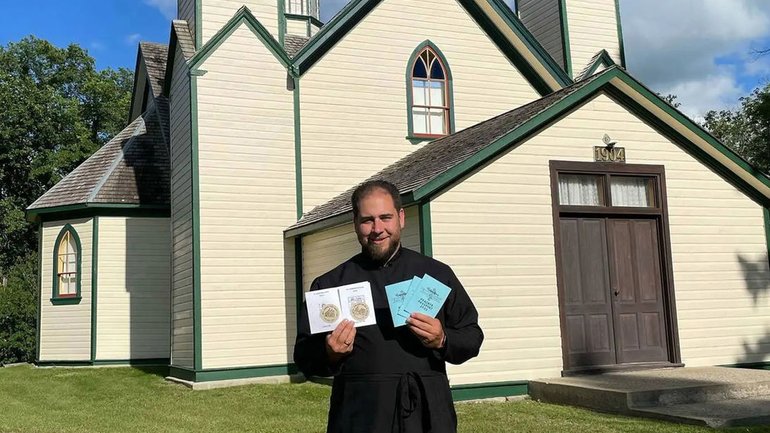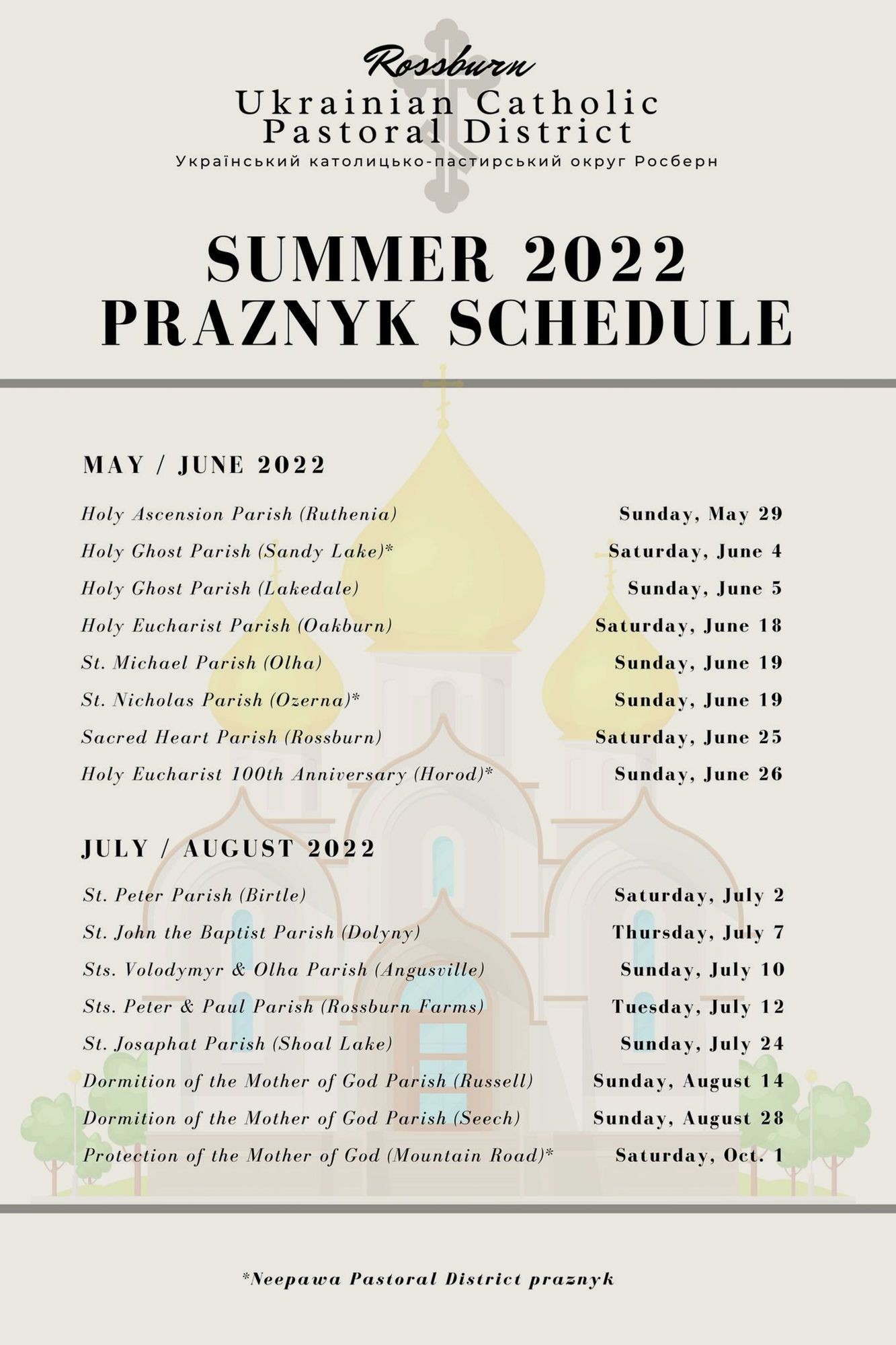Priest develops plan to encourage feast day visits to Ukrainian Catholic parishes

Rev. Jay Korban of Rossburn, Man., developed what he calls the Praznyk Passport to encourage feast day visits to a dozen Ukrainian Catholic parishes located at the southwestern edge of Riding National Park.
“This summer is our homecoming,” says Korban, who took over the Rossburn Greco-Ukrainian Pastoral District in September of 2020.

“This is a time when we all want to get back. If we lose another summer, we will really lose traction.”
Produced on his office computer, the small copy paper booklet with a light blue cover, includes the name and location of each of the 12 parishes under his charge, as well as several in the adjacent Neepawa district, where he serves as interim pastor. Each page also features a line drawing illustrating the saint or event commemorated in the name of the parish, several which only meet once a year.
The praznyk—Ukrainian for holiday—is celebrated by a Catholic parish on the day of the year designated for their namesake saint. Current and former parish members and their families gather for the divine liturgy, a picnic lunch, and a blessing of the cemetery. Some parishes with a winter feast day celebrate in summer so more people can attend, says Korban.
“For some of them, this is the only service they have in the year and if that ceases to exist, the church ceases to exist,” Korban says of about half the parishes under his charge.
Usually, people only attend the praznyk of their own parish, but after two years of gathering restrictions, Korban wanted to bump up participation, so he created the passport and stamps participants’ pages with a sticker at each event they attend, which run from May to October.
“This is also to break down the mentality this is my church and that is their church,” says Korban, who estimates about 60 people have attended each event so far.
“We are all one church.”
Winnipeg artist Michael Boss also plans to spend time this summer visiting Ukrainian parishes—both Catholic and Orthodox—as part of an ongoing project to document the buildings which were once both religious and social centres in small rural settlements across the province.
“The idea is just to preserve these beautiful, individualized churches that exists by the hundreds,” says Boss during a visit to his home parish St. Mary Ukrainian Catholic Church in Rossdale, about 20 kms north of Winnipeg.
Still active with about 30 families, the second church of the parish was constructed in the lates 1950s with a brick façade, large central dome and two smaller ones, was designed by Rev. Philip Ruh, also responsible for Immaculate Conception Ukrainian Catholic Church in Cook’s Creek. Boss drew elevations of the original wood church, constructed a few kilometres away from the current building.
Aided by funding from Manitoba Arts Council, Boss has already visited 200 churches or sites of former parishes across the province, and drawn elevations of about of 20 buildings, using both his own photographs and archival records.
“I know lots of churches have been demolished or burnt (down), and a lot of details would be lost,” he says of the reason for the project, which could extend to 1,600 drawings.
“For me, I’m interested in seeing the details. How it looked from the sides, not (only) the front. Or how the tops look so different.”
But Boss sees the project as more than just artistic curiosity, since he’s also attempting to document one aspect of the life of early Ukrainian settlers in Manitoba.
“The aim is to get in a frame of mind and a frame of heart just to appreciate what immigrants went through and appreciate the distances they had to travel,” he says.
That connection to the past also propelled Korban’s passport project. He says feast day events offers former parishioners a chance to reconnect with family and the place where they were baptized, confirmed or married as well as reviving ties to their religious heritage.
“It’s a connection to their history,” says Korban, who takes the opportunity at each event to talk about the namesake saint and how their story applies to life today.
“It’s an opportunity to reignite their faith.”









